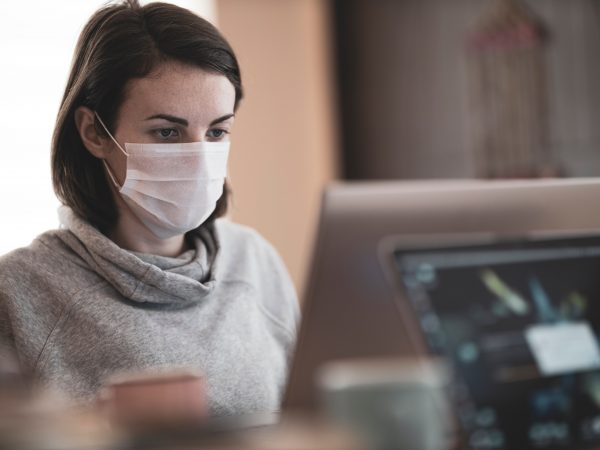
Chemical safety often focuses on proper storage and personal protective equipment (PPE). This information is important, but you should also be aware of the health implications of chemical exposures.
What is industrial hygiene?
Industrial hygiene is defined as “a science concerned with the protection and improvement of the health and well-being of workers in their vocational environment.” It addresses occupational health and safety issues such as:
- Noise exposure levels
- Temperature extremes (indoor and outdoor)
- Indoor air quality (including combustible dust, radon, ventilation, carbon monoxide, etc.)
- Ergonomics
- Radiation
- Chemical exposures
These hazards can impact your employees’ safety and short- and long-term health.
The role of an industrial hygienist
An industrial hygienist is a person who is trained to use environmental monitoring and analytical methods to detect hazards in the workplace. They analyze exposure risks and use engineering methods to control or eliminate work hazards.
The purpose of a worksite analysis by an industrial hygienist
A worksite analysis is the first step in helping an industrial hygienist determine the jobs and workstations at risk. Whenever employees work around hazardous chemicals, there is a chance for chemical release and exposure. An industrial hygienist tours your operations and observes how work gets done. They identify exposure areas, problem tasks and risks. They aim to identify ways to isolate all hazards, including how particular chemicals or physical hazards affect worker health.
Industrial hygienists recommend corrective actions and help you implement a safer workplace.
How chemical exposures happen
Chemical exposures don’t have to be an obvious incident or catastrophic release of chemicals. Exposures can happen over time or remain undetected until it’s too late. All of the following can be hazardous to the human body:
- Vapors and fumes
- Fine dust suspended in air (silica, powders and metals)
- Corrosive liquids and mists
These chemicals can be inhaled, ingested, injected or absorbed.
Chemical exposures often come from:
- Spilling liquids or powders during transportation or transfer
- Welding parts with oil or other types of coatings that are released into the air when heated
- Handling or being around unsealed or uncapped containers of vapor-producing substances
- Tracking chemical residue on clothing or shoes in a public area or home
- Grinding or sanding tools that cause fine particles to enter the air
- Improper storage
- Working in confined spaces
- Areas that lack ventilation
- Improper monitoring
Chemical exposures can have acute (sudden onset), short-term and chronic (long-term) effects on body parts and body systems. The impact of those exposures can vary based on the following:
- The volume and concentration of the substance
- The time it takes to alert workers of the chemical exposure (air monitoring systems, etc.)
- The amount of time the person is exposed
- Whether they are wearing the correct PPE
- The safety measures they take
2024 updates to the Hazard Communication Standard
The Occupational Safety and Health Administration (OSHA) has revised its Hazard Communication Standard (HCS). The changes were published on May 20, 2024, and will take effect July 19, 2024.
What changed?
OSHA updated its HCS to include how chemical manufacturers, importers and distributors classify and label their products. These changes are meant to keep pace with Globally Harmonized System of Classification and Labeling of Chemicals (GHS) Revision No. 7. The GHS standardizes how chemical manufacturers, importers and distributors classify chemical hazards and communicates those hazards so everyone can understand them. Harmonized classification and labeling are essential in a global supply chain.
How the HCS changes affect employers
Even if you don’t manufacture, distribute or import chemicals, you must revise your hazard communication program and train your employees on the changes. You may encounter new labels and SDSs for chemical substances and mixtures. You’ll also need to evaluate and update any labels you’ve created for on-site use.
Here are OSHA’s HCS compliance dates:
- Chemical manufacturers, importers and distributors evaluating substanceshave until Jan. 19, 2026, to update their evaluation standards, labels and SDSs.
- Employers who use chemical substances must update their alternate labeling systems and hazard communication programs (including SDSs and chemical inventories), and train employees on newly identified or reclassified chemical hazards by July 20, 2026.
- Chemical manufacturers, importers and distributors evaluating mixtureshave until July 19, 2027, to update their evaluation standards, labels and SDSs.
- Employers who use chemical mixtures must update their alternate labeling systems and hazard communication programs (including SDSs and chemical inventories), and train employees on newly identified or reclassified chemical hazards by Jan. 19, 2028.
Training employees on chemicals they work with
One of the first steps in preventing chemical exposure is training. OSHA’s HCS emphasizes understanding chemicals used on the job and protecting against chemical hazards.
OSHA requires employers to have a current written hazard communication program.
- Learn about the chemicals at your workplace using OSHA’s Occupational Chemical Database.
- Make sure your hazard communication program includes a chemical inventory and documented employee training.
- Train your employees on the updated chemical hazards, safety measures, SDSs, pictograms and labels. Ensure they know where your SDSs and chemical lists are stored.
- Retrain employees as you receive new SDSs and labels, before using new chemicals or when chemicals are reclassified.
- Ask the chemical manufacturer or supplier to highlight changes on the SDSs for your workplace chemicals.
- If you use SDS management software, ask your account manager for guidance on updates.
Review your HCS training program annually and retrain employees when you introduce new chemicals.
Preventing chemical exposures in the workplace
Once you understand the chemicals you’re dealing with, you can create a plan to eliminate or reduce those hazards.
Eliminate the hazard
The best way to avoid exposure is to eliminate the hazard at the source. One way to eliminate a chemical hazard is to enclose or separate the substance from people or adjacent work areas. Another option is to use mechanical methods, such as ventilation or exhaust fans. You can also use robotics to avoid exposing people to chemicals.
Replace the hazard
If you can’t eliminate the hazard, consider replacing it with a less hazardous substance. This removes the highly hazardous substance from the process, preventing workers from handling or storing it on site.
Change the way people work
The next option to reduce exposure is administrative controls. Examples include developing safe procedures for handling, storing and transporting substances, rotating workers and limiting the time workers are exposed. If you are using administrative controls to reduce chemical exposures, you may need to sample the air and test equipment periodically. This will let you know that your controls are working and people in the hazard zone are protected.
Use PPE
Once you have exhausted all of the above options, PPE is your last line of defense. Remember, if you are relying on PPE, an unintentional chemical release hazard still exists and your workers could be exposed.
Make sure your workers know:
- How to select the right PPE for the task
- How to maintain the PPE
- How to inspect PPE and identify when it needs replacing
- Who to tell if PPE is unavailable or unsafe
- What the limitations of the PPE are (For example, respirators require fit testing and medical evaluations.)
- It’s OK to stop work if conditions are unsafe or proper PPE is unavailable
If PPE is part of the solution, conduct a thorough risk assessment to identify the hazards and protective actions necessary for your employees to remain safe and healthy. PPE may include respirators (often used along with ventilation), gloves, chemical-resistant clothing, goggles and face shields.
The importance of proper housekeeping
Cluttered aisles and precariously stacked overhead storage creates hazardous work areas. Chemical exposures can happen because of the following:
- Leaving lids off containers
- Delaying cleanup of spills and leaks
- Allowing dust or other substances to accumulate on equipment and tools
- Leaving clutter in walkways, which creates slip, trip and fall hazards that can lead to an unintentional chemical release
- Improper storage of a chemical, like a storage area that lacks ventilation or is exposed to the elements or in a container that makes splashes
- Improper or missing labels
- Failing to isolate or clean clothing and/or footwear (tracking it into work areas and at home)
Think about common areas like locker rooms and break rooms. Contaminated clothing, gloves and footwear can spread hazards into these areas and impact people who may not typically work with hazardous chemicals.
A tidy workplace helps to reduce the rate of injuries and illnesses.
Make safety a priority
Working with and around chemicals does not have to be dangerous to your employees. Encourage workers to speak up if they see dangerous behaviors or encounter hazardous environments. Don’t retaliate against people who report unsafe behaviors. Investigate all near-misses and educate employees instead of penalizing them. A safe workplace pays itself back with increased productivity and morale, and reduced injuries and illnesses. It also leads to lower workers’ compensation rates and other long-term savings.
Connect with our team and make safety a priority!


